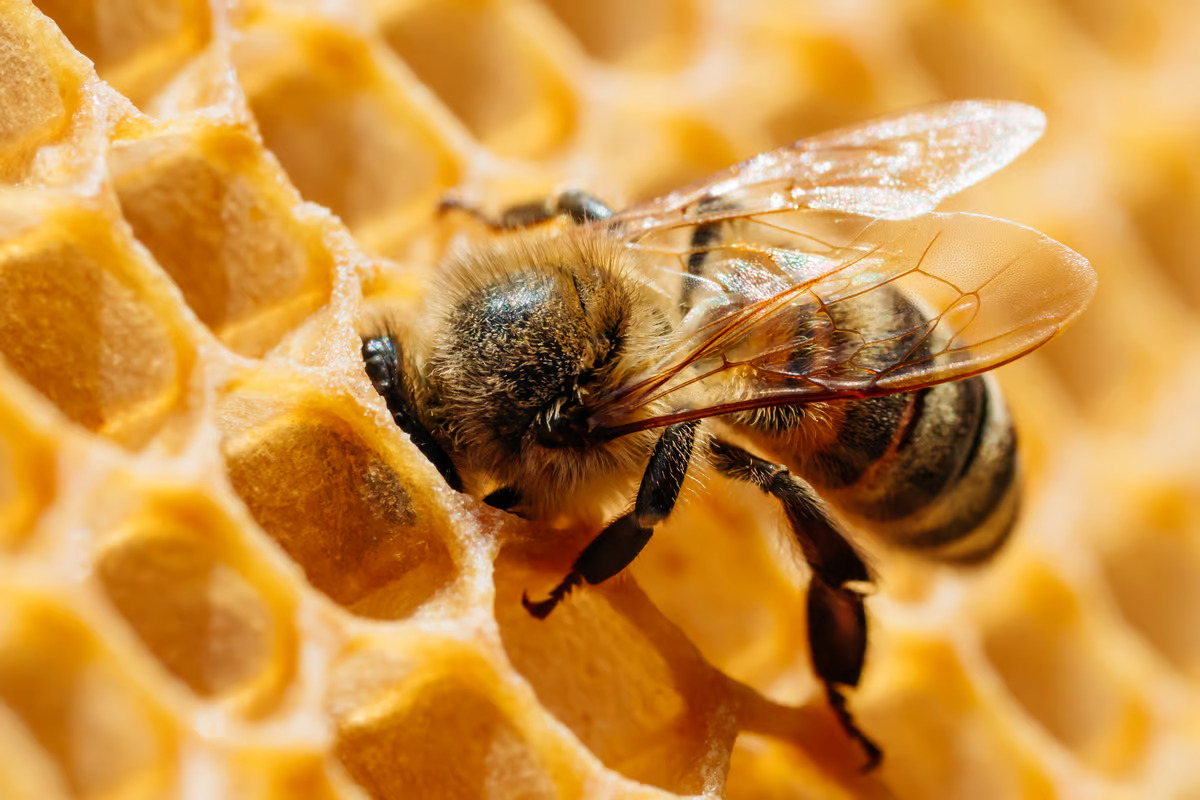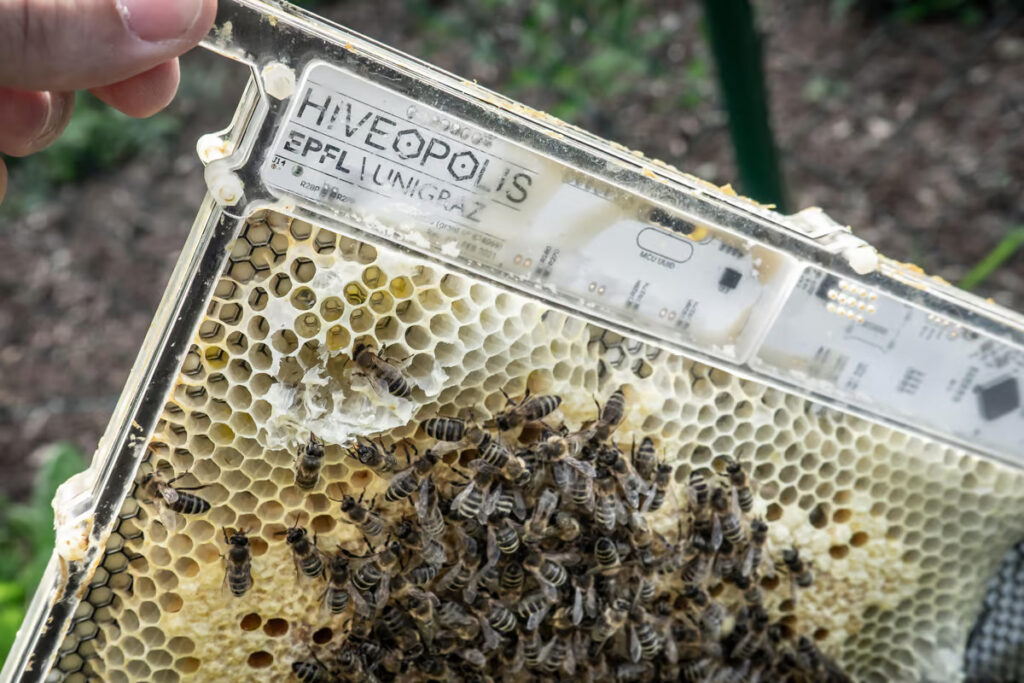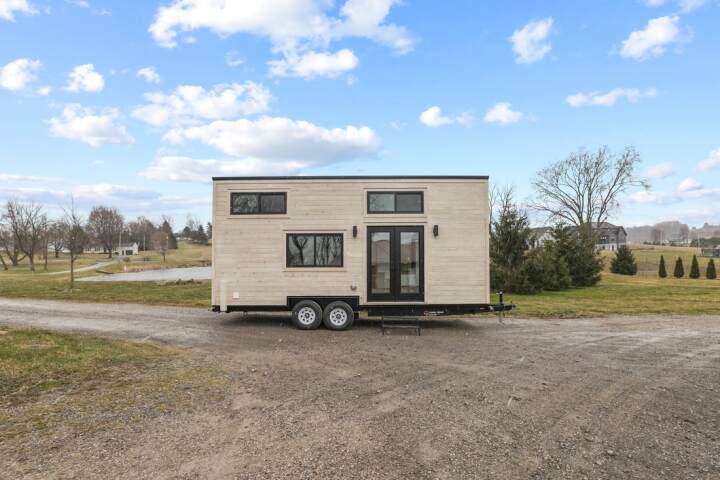 A robotic hive was able to help honeybee colonies endure through extreme winter weather. Depositphotos View gallery – 4 images
A robotic hive was able to help honeybee colonies endure through extreme winter weather. Depositphotos View gallery – 4 images
–
So in a win for both bees and ecologists, a team of roboticists and biologists from École Polytechnique Fédérale de Lausanne (EPFL), in Switzerland, and the University of Graz, in Austria, have developed a robotic honeycomb that both keeps the bees toasty during cold snaps and also allows them to be studied.
The robotic beehive device was designed to slip unobtrusively into an existing hive, and in it a central processor coordinated sensors, sent commands to the actuators and sent data to the team watching from afar. With its thermal sensors and actuators, the robotic beehive was able to measure and steer honeybee behavior by switching up the localized temperature.

“Many rules of bee society – from collective and individual interactions to raising a healthy brood – are regulated by temperature, so we leveraged that for this study,” explained first author Rafael Barmak, PhD student at EPFL. “The thermal sensors create a snapshot of the bees’ collective behavior, while the actuators allow us to influence their movement by modulating thermal fields.”
Heat is also sent into the honeycomb connected to the robotics, and it’s gentle enough to not bother the bees but allows scientists to thermoregulate the colony. Testing the system on 4,000 bees they encouraged to move into this high-tech home, the team was able to keep the colony alive during a 2020-2021 cold snap when nearby hives died out.
“Previous studies on the thermal behavior of honeybees in winter have relied on observing the bees or manipulating the outside temperature,” added Martin Stefanec, from the University of Graz. “Our robotic system enables us to change the temperature from within the cluster, emulating the heating behavior of core bees there, and allowing us to study how the winter cluster actively regulates its temperature.”
The “biohybrid superorganism” is an exciting step for studying populations and positively, light-handedly influencing behavior rather than disrupting and upsetting balances in animal communities.
“By gathering data on the bees’ position and creating warmer areas in the hive, we were able to encourage them to move around in ways they would never normally do in nature during the winter, when they tend to huddle together to conserve energy,” said Mobile Robotic Systems Group head Francesco Mondada. “This gives us the possibility to act on behalf of a colony, for example by directing it toward a food source, or discouraging it from dividing into too-small groups, which can threaten its survival.”
And by distributing heat through the actuators, the scientists were also able to prolong the survival of a colony despite it losing its queen. While it’s still in its early stages, the robotic hive shows promise in being able to mitigate colony collapse due to chill coma, and also offers new behavioral insights and knowledge for conservation scientists.
The study was published in the journal Science Robotics.























